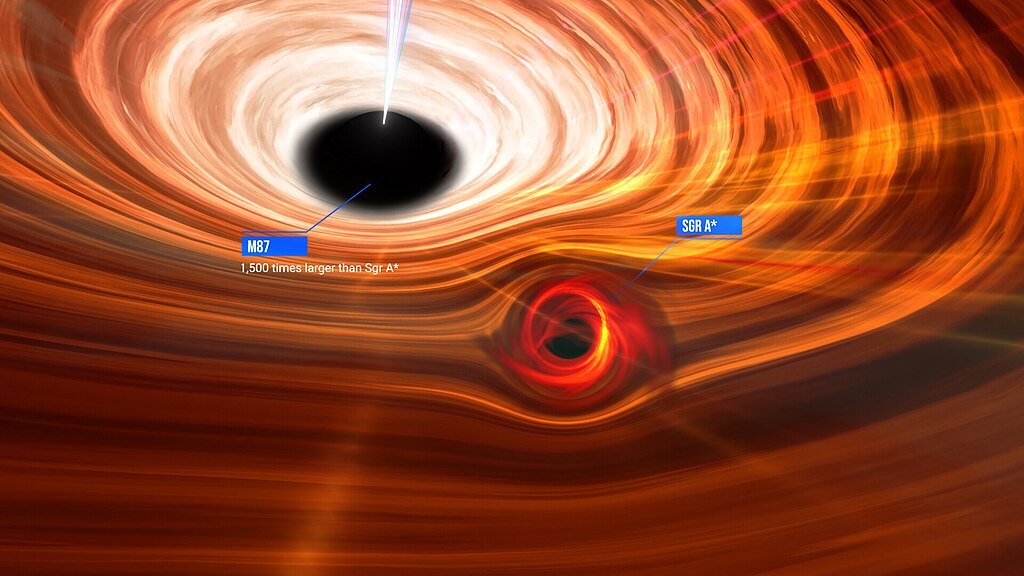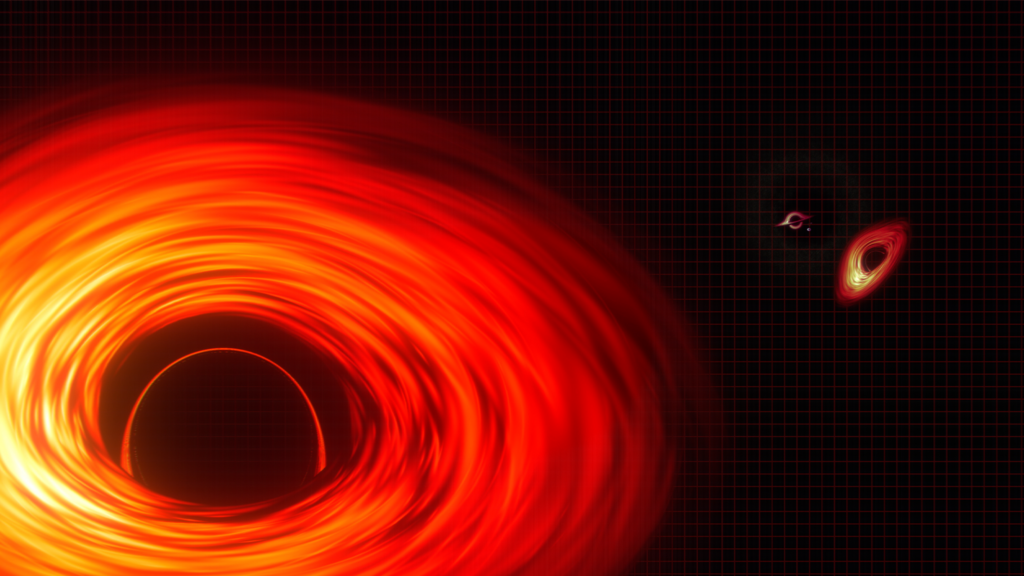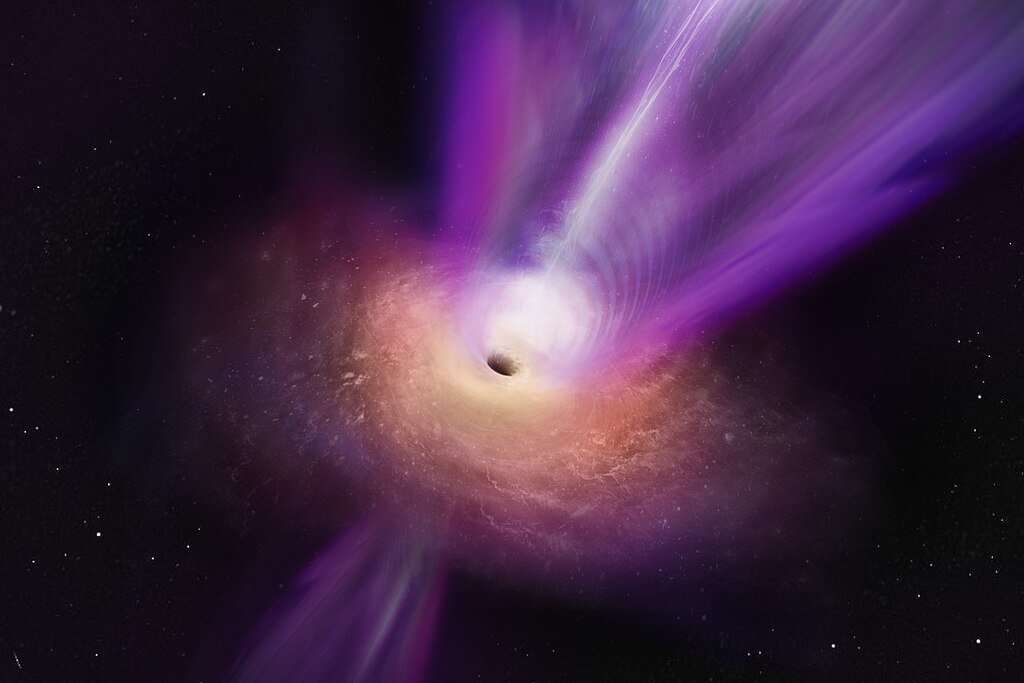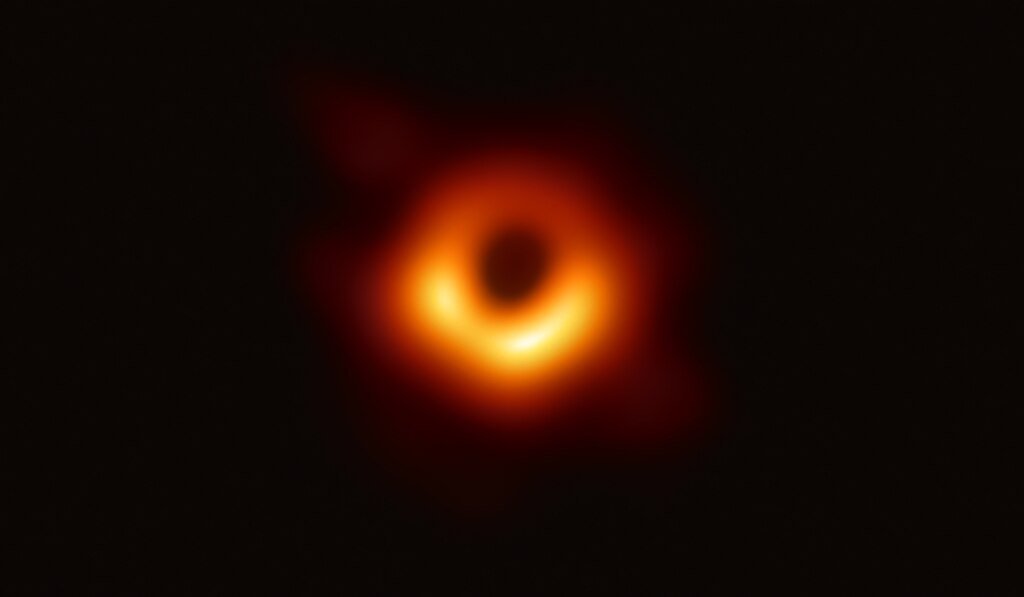At the core of the galaxy Messier 87 (M87), a cosmic behemoth is challenging preconceptions. Renowned for being the first black hole ever directly photographed, the supermassive black hole M87 has just exposed another amazing secret: it devours matter even faster and spins at a blistering 80% of the maximum speed in the universe. Using the revolutionary data from the Event Horizon Telescope (EHT), new studies have not only fixed its dizzying rotation but also revealed the mind-bowing speed at which gas and dust spiral into its abyss. This realization helps us to better grasp how black holes drive their enormous jets and affect the galaxies they anchor.
A Black Hole That Defies Imagination

M87 is not any typical black hole. Rising to a startling 6.5 billion times the mass of our Sun, it rules its galactic center with gravitational ferocity. Its spin, a near-limitless whirl dragging spacetime itself along with it, really distinguishes it though. Now estimated by scientists as 80% of the cosmic speed limit, this figure is so extreme that the inner edge of its accretion disk flies at 14% the speed of light (42 million meters per second).
There are fantastic consequences. Apart from eating matter, a spinning black hole warps the fabric of reality around it, twisting magnetic fields and launching plasma jets at almost light speeds. Whirl of M87 suggests it has been feasting for eons, spreading through explosive mergers or relentless feeding.
The Relativity Trick That Revealed Its Spin

How would you quantify the spin of a non-light emitting object? The solution resides in a phenomena known as relativistic Doppler beaming. The famous picture of M87 by the EHT showed dimmer on one side and asymmetrically glowing ring brighter on the other. This was a telltale indication of matter traveling at relativistic speeds, not a flaw.
- Light compression makes material flying toward Earth seem more brilliant.
- Materials moving away dims as their light stretches.
Through measurement of this imbalance, scientists derived the spin rate of the black hole. The real surprise, though, came when they examined the magnetic fields; matter isn’t just orbiting; it’s plunging inward at 23% light speed (70 million meters per second), far faster than earlier calculations.
A Surprisingly “Modest” Appetite for Destruction

M87 is eating rather lightly despite its great reputation. It consumes a pittance for a black hole of its size between 0.00004 and 0.4 solar masses annually. This is much below the Eddington limit, the theoretical maximum feeding rate before radiation pressure stops additional intake.
Why is she not eating more? Its turbulent accretion disk may hold the solution. Recent multi-year EHT data show chaotic plasma flows in which the brightest area of the disk moves 30 degrees counterclockwise between 2017 and 2018. This turbulence probably disturbs consistent feeding, producing rather than a continuous feast sporadic bursts of activity.
The Jet Engine Powered by a Black Hole’s Spin

The 5,000-light-year-long relativistic jet of M87, a beam of particles screaming into almost light speed, is among its most amazing characteristics. According to the new research, the spin and accretion energy of the black hole directly fuels the jet.
It works as follows:
- Rising to billions of degrees, falling matter whirls into the disk.
- Twisted magnetic fields channel some elements outward along the poles.
- The spin of the black hole accelerates particles to extraordinarily high energies like a cosmic dynamo.
This process is so effective that the power of the jet matches the energy of all the infalling matter, thus demonstrating that M87 is a cosmic powerhouse rather than only a destroyer.
Einstein’s Victory and the Edge of Physics
M87 is a laboratory for extreme physics, not just a scientific curiosity puddle. Originally seen in 2019, its shadow fit Einstein’s general relativity’s predictions exactly. Its spin and feeding behavior now help to confirm even more the supremacy of the theory in strong-gravity environments.
Still, questions abound:
- Spin can get how close to the theoretical max (0.998)? M87 may be even faster according current estimates.
- The turbulent accretion is driven by what? Future EHT observations (data from 2021–2024) seek to decode this anarchy.
- Could its spin help us to detect gravitational waves? One day, upcoming missions like LISA will sense their ripples in spacetime.
The Future: A Black Hole Under Surveillance

M87 isn’t doing anything shocking for us. With the EHT growing, adding telescopes like the Greenland Telescope and upgrading to higher resolutions every new observation pulls back another layer of its mystery. Plans for “black hole movies” may soon expose real-time dynamics of its jet-launching and feeding systems.
As astrophysicist Hung-Yi Pu observes, “The black hole accretion environment is turbulent and dynamic. Seeing it change with time clarifies our knowledge”. The era of stationary images is about to fade for M87. The next chapter is a multi-wavelength high-definition narrative of a spinning monster sculpting its cosmic domain.
Final Thought
Black holes are dynamos of spacetime, spinning at the edge of physical possibility and sculpting their galaxies, not just passive voids, M87 has taught us. Who knows what more extremes we will find as we keep observing? One thing is certain: the most fascinating powers in the universe are also its most destructive ones.
Source:

Suhail Ahmed is a passionate digital professional and nature enthusiast with over 8 years of experience in content strategy, SEO, web development, and digital operations. Alongside his freelance journey, Suhail actively contributes to nature and wildlife platforms like Discover Wildlife, where he channels his curiosity for the planet into engaging, educational storytelling.
With a strong background in managing digital ecosystems — from ecommerce stores and WordPress websites to social media and automation — Suhail merges technical precision with creative insight. His content reflects a rare balance: SEO-friendly yet deeply human, data-informed yet emotionally resonant.
Driven by a love for discovery and storytelling, Suhail believes in using digital platforms to amplify causes that matter — especially those protecting Earth’s biodiversity and inspiring sustainable living. Whether he’s managing online projects or crafting wildlife content, his goal remains the same: to inform, inspire, and leave a positive digital footprint.




